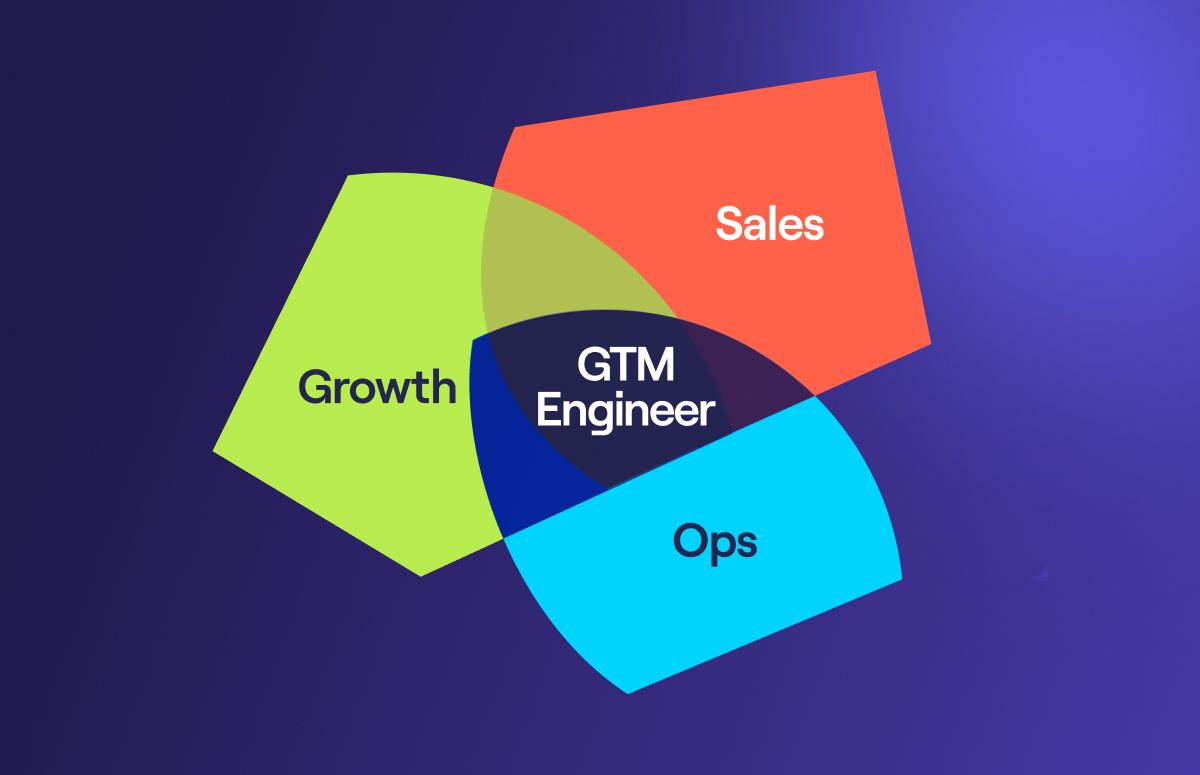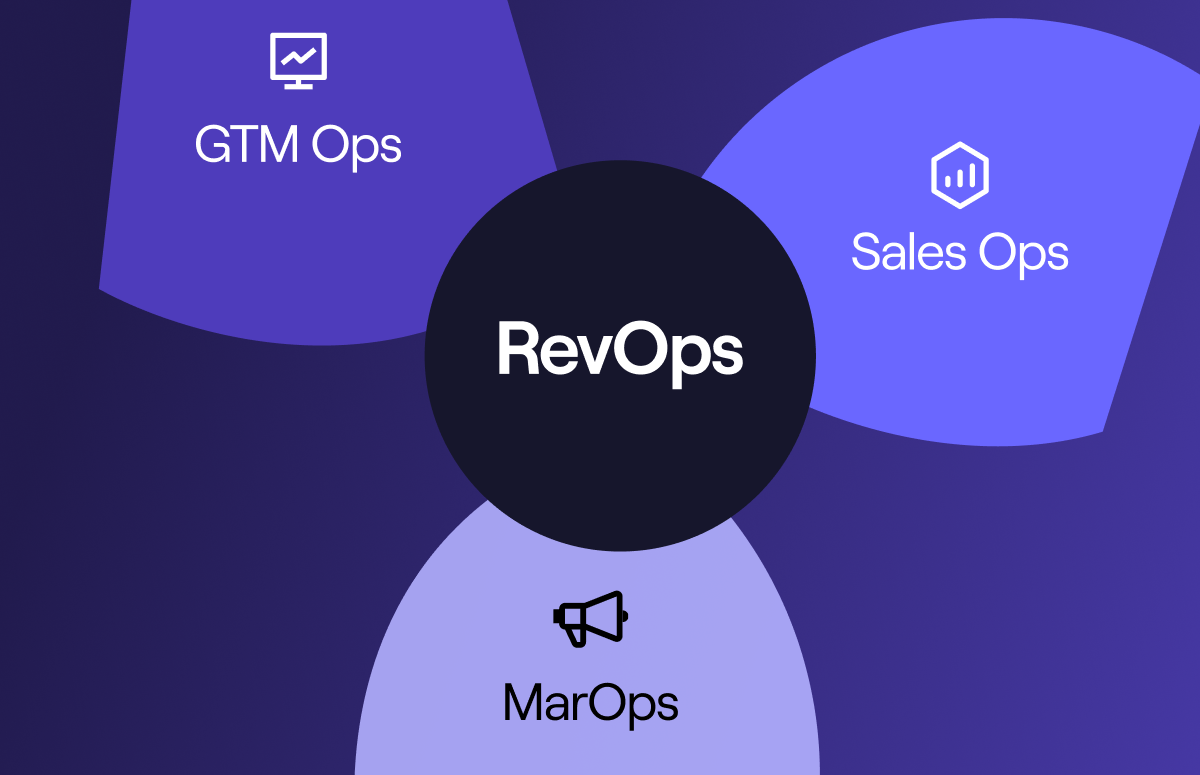8 Revenue Operations Metrics for Driving Business Growth
Choosing which revenue operations metrics to monitor is about as difficult as choosing which movie to watch at a sleepover when you were a kid.
Comedy, horror, or a classic?
Sales, marketing, or CS metrics?
However, in this case, the stakes are a bit higher!
The question of which metrics to track is directly tied to which parts of your revenue engine you want to improve.
To help you make a smart choice, we’ve compiled eight of the most critical revenue metrics.
Tracking them should help your revenue operations team spot big opportunities to tune up the revenue engine, fix operational malfunctions, and drive business growth.
1. Customer Acquisition Cost (CAC)
Formula: CAC = (total cost of sales and marketing) / (number of new customers won)
Customer Acquisition Cost is the average amount of money a company spends to win a new customer.
To find the numerator, add up all the expenses involved in attracting, engaging, and closing new business.
This might include the cost of software, staff salaries, content creation processes, and, unfortunately, all the bottles of champagne you sent unsolicited to potential customers during that half-baked Christmas Eve campaign.
The denominator is simply the number of new customers you’ve won in the period (it has nothing to do with how much they’re paying you).
Example
Last year, a B2B SaaS firm had the following metrics:
- Total cost of marketing and sales = $1 million.
- New customers won = 50.
Therefore, the CAC = $1 million / 50 = $20,000.
Why track CAC?
Tracking CAC helps you assess the efficiency and profitability of your revenue growth strategies.
A higher CAC than your industry benchmark suggests you’re spending too much money acquiring new customers.
To lower your CAC, you’ll need to find ways to streamline your marketing and sales processes.
On the other hand, a CAC below that benchmark means you’ve got an efficient sales cycle and can easily win net new logos. Congrats!
👉 Revenue metrics got you down? Cognism can help. See how Sales Companion is optimising territory planning, lead scoring, and more for RevOps leaders.
2. Customer Lifetime Value (CLV)
Formula: CLV = customer value x average customer lifespan
CLV measures how much revenue you expect to generate on average from a single account throughout a customer relationship.
You arrive at this number by multiplying the average customer value by the length of time they usually stay with your business.
If you sell one-off items, your customer value is the average number of products purchased per year x the price of those products.
If you sell recurring services, your customer value is your ARPU (average monthly recurring revenue per user).
Example
Imagine a business has the following key metrics:
- Customers usually buy 5 products per year.
- The average product costs $1000.
- The typical active customer sticks around for 7 years before their unforgivable betrayal!
Thus, the CLV = (5 x 1000) x 7 = $35,000.
Why track CLV?
Tracking CLV helps the revenue operations team understand the value of each new customer.
A rise in the number indicates that your revenue-generating activities are paying off.
A decline suggests that either customers are leaving earlier (higher customer churn) or buying less, both of which are problems to fix.
CLV is also incredibly useful for identifying ideal customers. You can calculate CLV by different customer segments.
In this process, you may find interesting insights that help you strategically shift your revenue approach.
For example, you might find that businesses located in Miami are far more profitable to you than those in New York City.
Supposing this relationship is causal and not just something your Head of Sales cooked up so they could hit the beach on business trips, you could redirect your marketing strategy to focus on Miami businesses.
3. Churn Rate
Formula: Churn rate = (number of lost customers / total customers at the start of a time period) x 100
The churn rate measures the rate at which customers end their relationship with your business.
Most revenue operations teams calculate churn rates monthly, quarterly, and annually.
Example
Imagine a company is calculating their annual churn rate.
At the beginning of the year, they had 200 customers. Over that period, however, they lost 20 customers.
The customer churn rate = 20/200 x 100 = 10%
Why track churn rate?
Churn rate helps RevOps managers assess their customer success prowess. Are they creating customer satisfaction or not?
A high churn rate often indicates a deficiency in your onboarding process or customer engagement initiatives.
It could also be related to your lead qualification process. To hit quota, your sales team might be closing customers who are bad fits for your brand.
It’s important to get feedback from churned accounts to discover the cause. Ask internal champions why they left. Then, use that intel to improve the broken part of your customer retention strategy.
After you’ve made these adjustments, continue monitoring churn rate. See if it improves next quarter. If so, you’re on the right track.
4. Average Lead Response Time
Formula: Average lead response time = sum of time to respond to leads / total number of leads
The average lead response time, also known as speed to lead, is the average time it takes for a sales rep to contact a new inbound lead.
To find the metric, you’ll need to start timestamping the creation of inbound leads and when the first rep activity occurs on the contact. Most CRMs allow this functionality.
Then, you’ll need to find the difference (in minutes or hours) between those two numbers and average it out across your entire team.
Example
A company has the following stats over the last quarter:
- Across their team, the total time it’s taken to respond to leads is 1600 minutes.
- There have been 160 inbound leads.
Therefore, the average lead response time = 1600 / 160 = 10 minutes.
Why track average lead response time
The faster a sales rep replies to an inbound lead, the likelier they will secure a meeting.
Harvard Business Review found that firms that reached out to inbound leads within an hour were around seven times as likely to move the lead to the next stage as firms that took over an hour.
By tracking this critical metric, you can change your marketing-sales handoff process to ensure leads always receive a quick response.
Suppose your average response time is over five minutes. In that case, it may be time to implement an automated lead routing system that uses software to distribute new leads to the right rep automatically.
5. Win Rate
Formula: Win rate = (total number of closed/won deals / total number of sales opportunities) x 100
Win rate measures the percentage of deal closures your sales team achieved in a given time period.
To calculate win rate, find the number of deals your team has won and divide it by the number of sales opportunities.
Example
Let’s say a company’s sales team has the following stats in Q2:
- 50 sales opportunities.
- 20 closed/won opportunities.
In this case, the win rate = (20/50) x 100 = 40%.
Why track win rate?
Win rate is a good way to measure the effectiveness of your sales process and the performance of your sales reps.
It’s like a batting average in baseball. Account Executives care about it, and RevOps should too.
A high win rate is a sign that reps consistently provide prospects with good customer experiences that lead to a purchase.
A low win rate, on the other hand, suggests there’s something wrong with the process or your team’s ability to execute the process. A good way to figure out the issue is to calculate the win rate of individual reps.
Usually, if it’s a problem with the sales process, you’ll find consistently low win rates across your entire team.
If the problem is with performance, you’ll find more win rate variability.
Calculating the win rates of individual reps also enables you to identify top closers whose habits and tactics you can teach to the reps with lower win rates. The idea here is to standardise their mastery across your team.
Another helpful way to use this metric is to compare win rates from one quarter to the next. This way, you can see if your RevOps strategy, whether sales training or process optimisation, is working.
6. Sales Velocity
Formula: Sales velocity = (number of sales opportunities x average deal size x win rate) / (sales cycle length)
Sales velocity, also known as pipeline velocity, measures how fast your business generates revenue.
To calculate it, follow these steps:
- Find the number of sales opportunities.
- Find average deal size => total revenue generated / total number of closed-won deals.
- Find win rate => number of sales opportunities won / number of sales opportunities.
- Find sales cycle length => total number of days to close all deals/number of closed deals.
- Then, plug these numbers into the formula listed above.
Here’s a walkthrough 👇
Example
Let’s say a B2B consulting firm had the following stats last year:
- Sales opportunities = 100.
- Average deal size = $50,000.
- Win rate = 20%.
- Sales cycle length = 30.
Their sales pipeline velocity = (100 x 50,000 x .2) / 30 = $33,333.
Why track sales velocity?
Want your deals to fly through the pipeline faster than a bird of prey?
Then, you need to track sales velocity. It helps you understand how leaky your pipeline can be and, as a result, the effectiveness of your sales strategy.
When leads move slowly through the pipeline, you know there’s a snag in there you need to sort out.
But where’s it occurring? The presentation stage? The proposal stage?
Here’s where this vital sales metric becomes even more valuable.
You can inspect the pipeline velocity of each stage in your sales pipeline. And you might find that deals tend to stall in one specific stage.
With this intel, your RevOps team can solve the issue and promote faster revenue generation, enabling your sales reps to effectively manage more deals at a time.
Side Note: Sales velocity is also a useful metric for effective sales forecasting, another duty of most revenue operations teams.
7. MQLs Generated
MQLs generated represent the number of marketing qualified leads your marketing team generated in a given time period.
An MQL is a lead that’s considered likely to buy from you.
Calculating this revenue operations metric is pretty straightforward. You just count up the MQLs.
However, defining an MQL for your company is a bit more tricky.
This is where lead scoring comes into play.
Most RevOps teams create a score threshold above which leads are considered marketing-qualified.
Some factors that commonly affect the lead’s score include:
- How well the account’s firmographics match your ideal customer profile.
- How well the contact’s demographics align with that of your typical buyer.
- Whether their online behaviour signals buying intent.
- How much they’re interacting with your website and marketing campaigns.
RevOps teams then hardcode this criterion into lead scoring software, automatically tracking leads and assigning them points when they meet the requirements.
Why track MQLs generated?
Tracking MQLs enables your RevOps team to evaluate the effectiveness of your marketing efforts.
You can also track MQLs generated by different marketing campaigns and channels. This provides deeper insight into what’s working and what isn’t in your lead gen process.
8. Expansion Rate
Formula: expansion rate = [(revenue at end of period, excluding new customers - revenue from at start of month) / revenue at start of month] x 100
Expansion rate is a customer success metric that measures how much additional revenue you’ve earned from your existing customer base — through upsells, cross-sells, and add-ons.
The calculation excludes revenue generated from any new customers.
Example
A SaaS business has the following stats:
- MRR at the start of the month = $100,000.
- MRR at the end of the month (from the same customers) = $130,000.
Expansion rate = [(130,000 - 100,000) / 100,000] x 100 = 30%.
Why track expansion rate?
Expansion rate is popular among recurring revenue businesses, especially SaaS companies. It tells them how successful their CS team is in growing relationships with active customers.
Earning new revenue from current customers is also far more efficient than generating revenue from new businesses, so RevOps teams can use it as a proxy for measuring predictable revenue.
To boost the expansion rate, try making more personalised offers to your current customers.
AI-powered customer analytics tools can help you gain deeper insight into your customers’ needs. They can help you spot upsell opportunities related to their preferences.
Boost your RevOps metrics with Cognism
To calculate accurate RevOps metrics, you need accurate data.
Otherwise, you’re operating off of faulty information.
Cognism’s B2B database can provide your RevOps team with up-to-date, compliant data on your contacts and accounts. Book your demo today to see it in action 👇



